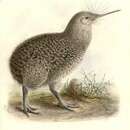fr
noms dans le fil d’Ariane


Living species of the class Reptilia are placed in four orders. The order Testudines includes turtles, the order Squamata includes lizards and snakes, the order Crocodylia contains crocodiles and alligators, and the order Rhynchocephalia contains the lizard-like tuataras.
As opposed to mammals and birds, reptiles have neither fur nor feathers, but scales. Reptiles can not be confused with amphibians because reptiles have dry, water-proof skin and eggs, as well as internal fertilization and more advanced circulatory, respiratory, excretory, and nervous systems.
Reptiles evolved from labyrinthodont amphibians 300 million years ago. The success of this terrestrial vertebrate group is due in large part to the evolution of shelled, large-yolked eggs in which the embryo has an independent water supply. This advance, as well as the development of internal fertilization, enabled reptiles to be the first vertebrates to sever their ties with water. They radiated out across the landscape, diversifying quickly and becoming the dominant life form on the planet during the Mesozoic Era, otherwise known as the age of the reptiles.